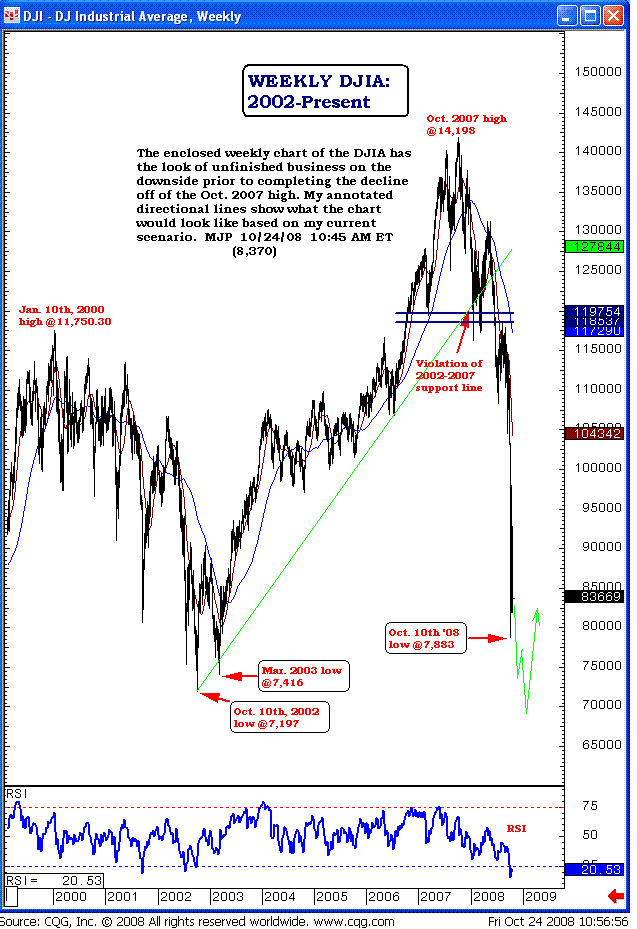Are We Heading Toward A Stock Market Crash In October
Post on: 16 Март, 2015 No Comment

There will be a big financial crisis before the end of 2013, and it will involve India, Brazil, China and Russia. Markets in the whole world will be rattled. The date of the market collapsing is predicted to be October 21, 2013.
It will continue into 2014, and it will be the beginning of the coming Great Depression which will last at least 20 years.
China Officially Backs Russia On Syria, Warns Military Action Would Have Negative Impact On Global Economy
Until now China had kept a relatively low profile on the Syria issue, occasionally issuing veiled support for the Assad regime. That changed at todays G-20 meeting in Russia, when Chinas vice-finance minister Zhu Guangyao officially launched the Syrian axis of Russia and China, both of which now indirectly support the Assad regime, and oppose US-led military intervention. From the FT. China warned on Thursday that military intervention in Syria would hurt the world economy and push up oil prices, reinforcing Vladimir Putin’s attempts to talk US President Barack Obama out of air strikes. “Military action would have a negative impact on the global economy, especially on the oil price – it will cause a hike in the oil price,” Chinese vice-finance minister Zhu Guangyao told a briefing before the start of the G20 leaders’ talks.
Private sector added fewest jobs since May
Private-sector employment growth slowed down slightly last month, as employers added the fewest jobs since May, according to data released Thursday morning.
Private employment expanded by 176,000 jobs in August, with gains at small, medium and large businesses.
US planned layoffs jump in August: Challenger
The number of planned layoffs at U.S. firms surged in August to their highest in half a year, with industrial goods manufacturers the hardest hit, a report on Thursday showed.
Employers announced 50,462 layoffs last month, up 33.8 percent from 37,701 in July, according to the report from consultants Challenger, Gray & Christmas.
The August job cuts were up 57 percent from the same time a year ago. For 2013 so far, employers have announced 347,095 job losses, close to the 352,185 that were seen in the first eight months of last year.
Marc Faber Stock Market Warning Western Imperial Arrogance Will Ignite Middle-East Powder-Keg’

FED PRESIDENT KOCHERLAKOTA: Were Failing To Provide Sufficient Stimulus To The Economy
Kocherlakota, one of the more dovish members of the Federal Open Market Committee (FOMC), struck a pretty dovish chord in his opening remarks.
Heres the important excerpt (emphasis added):
With that context, let me turn to the current stance of monetary policy. Six years ago, in the fall of 2007, the Federal Reserve had under $900 billion of assets, mostly in the form of short- term Treasuries. It was targeting a fed funds rate—the short-term interbank lending rate—of just under 5 percent. Six years later, the Federal Reserve owns well over $3 trillion of assets, mostly in the form of long-term government-issued or government-backed securities. It plans to buy still more over the remainder of 2013. It has also been targeting a fed funds rate of under a quarter percent for nearly five years. It anticipates continuing to do so at least until the unemployment rate, currently at 7.4 percent, falls below 6.5 percent, as long as inflation remains under control.
These policy actions—buying long-term assets and keeping short-term interest rates low—are designed to stimulate spending by households and firms, and thereby push up on both prices and employment. Is the FOMC’s policy stance providing an appropriate amount of stimulus to the economy? To answer this question, we have to compare the economy’s performance relative to the FOMC’s goals of price stability and maximum employment. In July, the unemployment rate was 7.4 percent—much higher than the FOMC’s current assessment of the longer-run normal unemployment rate, which is between 5.2 percent and 6 percent. At the same time, personal consumption expenditure inflation—including food and energy—is running well below the Fed’s target of 2 percent.
But current monetary policy is typically thought to affect the macroeconomy with a one- to two-year lag. This means that we should always judge the appropriateness of current monetary policy in terms of what it implies for the future evolution of inflation and employment. Along those lines, after its most recent meeting, the FOMC announced that it expects that inflation will remain below 2 percent over the medium term and that unemployment will decline only gradually. These forecasts imply that the Committee is failing to provide sufficient stimulus to the economy .
Interest Rate Shock: U.S. 10 Year Bond Rates Exploding! @ 2.94% AND RISING! Treasury Yields at 2-year High; Global Yields Rise!














